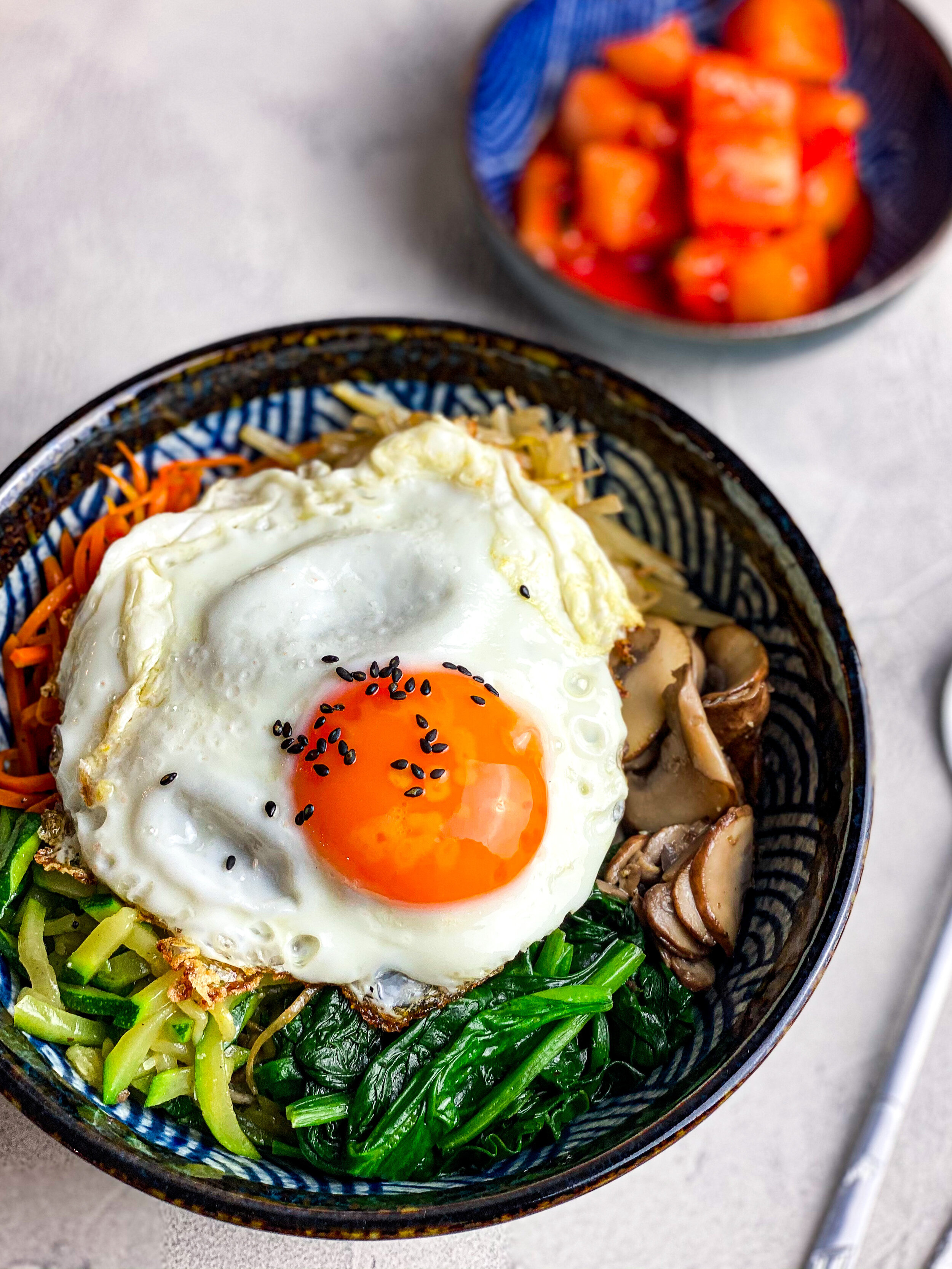BIBIMBAP - THE ULTIMATE KOREAN RICE BOWL
Have you ever eaten Bibimbap? This dish is probably one of the most well-known Korean dishes you can find and definitely for all the right reasons! A quick Korean lesson 101: ‘Bibim’ means mixed and ‘bap’ means rice. So simply, it means mixed rice in Korean.
When I was younger growing up in Korea, my mom made bibimbap almost on a weekly basis because it was a great way to get rid of all the side dishes (banchan) and it was fast and took very little effort. Nonetheless, it was always delicious! A true soul-food where you feel truly satisfied while eating! However, since I moved to Germany, I started to miss those days where I could just grab those homemade side dishes from the fridge that my mom made and just start making bibimbap.
You can customise your bibimbap in any way you prefer. You can make it vegetarian and vegan if you wish. You can technically put any vegetable you want! The key is the chilli sauce and cooking the key vegetables. Now, I’m sharing with you my recipe to make your own bibimbap with some couple of simple steps!
I hope you will enjoy!
-Ari Yori
BIBIMBAP RECIPE
prep time: 20 minutes
cooking time: 30 minutes
portion: 3-4 servings
INGREDIENTS
3-4 portions of steamed rice
Marinated beef (opt out for vegetarians)
200-250g ground beef
1 onion, sliced thinly
2 garlic cloves, pressed
1 tbsp soy sauce
1 tbsp sesame oil
1 tbsp honey
(substitute for 250g of bulgogi if you have some left over)
Bibimbap chili sauce
3 tbsp gochujang
1 large garlic clove, pressed
1.5 tbsp sesame oil
1.5 tbsp soy sauce
1.5 tbsp honey
2 tsp apple cider vinegar
Basic toppings
1 zucchini, julienned
2 large carrots, julienned
10-12 mushrooms substitute, sliced
230g fresh spinach
3-4 eggs
Sesame oil
Salt & pepper
Optional vegetable toppings
2 large handful Korean mung bean sprouts or soy bean sprouts
1 cup Korean pickled radish
1 cup edamame
1 cup kimchi
DIRECTIONS
Bibimbap chilli sauce:
combine gochujang, soy sauce, sesame oil, garlic, vinegar together and mix well. Set it aside.
Marinate the beef
Combine the ground beef, sliced onion, and sesame oil, honey, soy sauce, garlic together. Set it aside while you are preparing the rest of your vegetables.
If you have bulgogi left over, you can skip step 1.
Vegetable toppings, cooking the beef and eggs
Cut all of your vegetables and place them on a large plate as you will be cooking everything one by one.
Heat a large skillet to medium high heat. When your pan is hot, add 1-2 tsp of vegetable oil.
Sauté one vegetable kind at a time in the order from light coloured vegetable to dark coloured vegetable until they are slightly soft. Season all the vegetables with salt and pepper. Set the cooked vegetables aside and cover so it does not get cold.
Helpful tips:
For spinach and sprouts, let it wilt first on the pan by drawing out the water then add salt and pepper. Spinach does not require any oil when cooking. After when it’s cooked, lightly drizzle 1/2 tsp of sesame oil.
For mushrooms, let them sit on your pan until all the water draws out and most of it evaporates and the edges get slightly browned. The best way is to just let them sit instead of frequently stirring it on the pan. Then season with salt and pepper.
Once all of your vegetables are sautéed, cook your marinated beef until cooked through.
After you cook the beef, wipe the pan clean with a paper towel. Then add oil and fry a sunny side egg.
Assembly
Take a medium sized bowl, and first add a serving of rice. Then place each cooked vegetable around the top of the rice and add your cooked beef in the center. Place your sunny side egg on top.
Drizzle half of tbsp of sesame oil on your bibimbap and sprinkle with some sesame seeds to garnish. Pour approx 2-3 tbsp of the chilli sauce - or as much as you desire.
The best way to eat bibimbap is to mix everything together and enjoy each bite packed with flavour and healthy vegetables!




